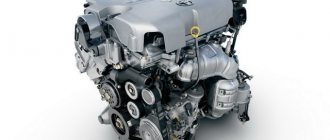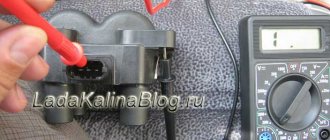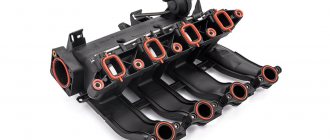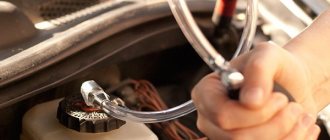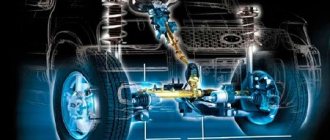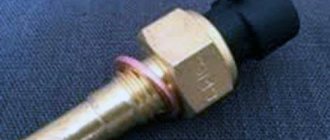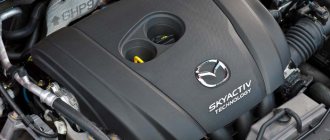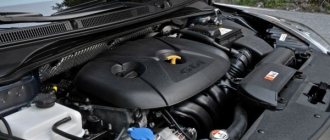Power steering greatly simplifies the work of the motorist. With hydraulics, the steering wheel is much easier to turn, even when the car is stationary. But if there is a hum from the power steering pump, then problems arise: you shouldn’t expect anything good from noise that comes from nowhere, and most likely you will have to make repairs. The source of the hum can be different, but the howl itself can be both constant and periodic. It all depends on the position of the steering wheel. Why does the hum occur, and can this problem be eliminated without repair?
Why is the power steering noise? What are the reasons?
The hydraulic booster was installed on the car back in Soviet times. At first, the MAZ was equipped with hydraulics. The first “passenger car” in our country, equipped with power steering, was the ZIL-111 produced in 1958. If earlier passenger cars had a worm gearbox, today almost all cars are equipped with a steering gear of the “gear-rack” type, and all hydraulics are sealed. In addition to the rack, the steering mechanism contains: - metal tubes and rubber hoses; — NVD; - expansion tank. The power steering pump is driven by a belt from the unit, creating the necessary pressure. The highest pressure limit is limited by a hydraulic throttle located in the pump. The system is filled with a special liquid composition. Some brands of cars use transmission oil for automatic transmissions. Noise in the power steering may appear if: - there is a fluid leak and there is very little of it in the system; — the steering rack is out of order; — air has entered the system; — the power steering pump has worn out; — the drive belt is loose; — low-quality liquid was used. A hum in the power steering is acceptable when the steering wheel is turned completely. When the wheels are turned out, high pressure rises in the hydraulic system, and it is not recommended to keep the steering wheel turned out to the very end for too long, because the pump can easily burn out.
______________________________________________________________________________
______________________________________________________________________________
Steering mechanism with hydraulic booster ShNKF for UAZ Patriot cars
The hydraulic power steering mechanisms of the ShNKF 453461.133 model are made using an integrated circuit, that is, a hydraulic distributor and a power cylinder are located in the same housing with the steering mechanism. Steering gear type: screw-ball nut-toothed rack-three-tooth sector. The gear rack is integral with the piston and ball nut of the screw drive. The UAZ Patriot steering gear screw, which interacts with the ball nut, is mounted on two thrust bearings, one of which is located in the steering gear housing, and the second in the distributor housing.
The bearing preload is adjusted using an adjusting nut located in the crankcase. After adjustment, the nut belt is jammed into the grooves. The hydraulic distributor of the mechanisms is tangential, rotary type with a centering element in the form of a torsion bar. One end of the distributor spool shaft with working hydraulic elements is located in the axial hole of the steering gear screw, and the other is supported by a radial roller bearing in the distributor housing. The spool shaft and the screw are connected to each other by a torsion bar, the twist angle of which is limited by segment stops installed between the spool shaft and the screw.
Through segment stops, a mechanical connection is made between the spool shaft and the screw when turning a car with a non-working hydraulic booster. The hydraulic neutral position of the spool shaft is established during the assembly and acceptance testing of the distributor and is fixed with a pin. Disassembly and adjustment during operation is not allowed. In the steering mechanism ShNKF 453461.133, a three-tooth sector with a shaft is installed in the steering mechanism housing on two radial roller bearings in eccentric bushings. Adjustment of the gearing in order to eliminate the gap is carried out by simultaneous rotation of the eccentric bushings from their original position clockwise, as viewed from the splined end of the shaft sector. After adjustment, the eccentric bushings are fixed with locking bolts located on the steering gear housing by deforming the locking collar of the bushing with each bolt, and the bolts themselves are locked with locknuts. Technical characteristics of the steering mechanism with hydraulic booster ShNKF 453461.133 Maximum load on the steered axle, kg. — 1200 Maximum torque on the output shaft of the mechanism at a maximum pressure of 10 MPa, Nm — 770 Maximum permissible operating temperature of the working fluid in the vehicle’s power steering system, °C — 90 Direction of the helical groove of the ball screw — left Gear ratio of the mechanism — 17, 3:1 Full angle of rotation of the shaft sector, degrees. — 80 Hydraulic play, no more than a degree. — 4 Capacity of the pump used with the steering mechanism, dm2/min. — min 5, max 7.5 Weight, no more, kg. — 12 Power steering mechanisms are designed for operation at ambient temperatures from -45° to +50°C. Design of the power steering pump reservoir SHNKF 453461.133 for the UAZ Patriot The power steering pump reservoir SHNKF 453461.133 for the UAZ Patriot is designed for storing and filtering the working fluid of the power steering system. Inside the reservoir housing there is a paper filter element that filters the fluid flow returning to the reservoir from the power steering system. Technical characteristics of the UAZ Patriot power steering pump reservoir: - the reservoir must be sealed; — tank filling capacity 0.6 l; — the filtration fineness of the filter element should be no coarser than 45 microns; — the filter element must be replaced after 100,000 km of vehicle mileage, but not less than after 2 years of its operation; — the oil level in the tank must not be lower than the level of the oil fill filter mesh. Power steering pump ShNKF 453471.105 for the UAZ Patriot The power steering pump ShNKF 453471.105 for the UAZ Patriot is designed to pump working fluid under pressure into the power steering system. Type - Double acting vane pump with built-in flow and maximum pressure valves. Designed to work in the steering system of passenger cars with increased comfort and cross-country ability. The injection hose connection is at the end. The power steering pump consists of a housing, a roller, a pulley, a working set and a cover with valves. The suction and discharge pipelines are connected to the cover. Depending on the engine used in the vehicle, the pumps are equipped with various pulleys (single-ribbed V-belt or poly-V-ribbed). Technical characteristics of the power steering pump ShNKF 453471.105 for the UAZ Patriot Maximum volumetric flow, dm3/min., no more than - 8.0 Nominal volumetric flow at 800 rpm, dm3/min, no less than - 4.8 Nominal volumetric flow at 2000 rpm, dm3/min., no more than - 7.3 Pressure, MPa - 10.5±0.5 Working fluid temperature, °C -20+90 Input shaft rotation speed interval, min-1 - 800-7500 Theoretical working volume, cm3 - 8.7 Weight, kg. — 3.6 Operation of the SHNKF power steering system of a UAZ Patriot When driving in a straight line, the shaft-spool of the UAZ Patriot steering mechanism is held in a neutral position by means of a torsion bar. The injection and drain lines, as well as the working cavities of the booster hydraulic cylinder, are interconnected. Oil passes freely from the pump through the hydraulic distributor in the cavity, and returns through the drain line to the hydraulic system reservoir. In this case, in the neutral position of the spool shaft, equal pressure is ensured in the working cavities of the amplifier hydraulic cylinder. When the steering wheel is turned, the working fluid supplied under pressure from the pump passes through a hydraulic distributor, which directs it into the corresponding cavity of the hydraulic cylinder. Under the influence of the pressure of the working fluid, the piston-rack moves and the shaft-sector of the steering mechanism ShNKF 453461.133 with the bipod and then the steered wheels rotates. At the same time, from the opposite cavity, the liquid is forced out by the piston-rack into the drain line, and then it enters the tank, passes through the filter element and enters the pump along the suction line. Operation and maintenance of the steering mechanism and power steering pump of the UAZ Patriot Basic conditions that determine the normal operation of the steering mechanisms ShNKF 453461.133 with hydraulic booster and the power steering pump of the UAZ Patriot in operation. Filling oil into the power steering system and bleeding should be carried out as follows: — Set the steering wheel to the straight-ahead position. — Remove the reservoir cap of the UAZ Patriot power steering pump and fill it with clean oil slightly above the level of the filler filter mesh. 3...5 minutes after filling, check the oil level in the tank and, if necessary, add to the level of the grid. - Start the engine and let it run without rotating the steering wheel for 10...15 s. Moreover, if the level drops, it is necessary to add oil to the tank to the level of the grid. Then, at idle engine speed, smoothly turn (the best result is achieved when the steered wheels are pre-hung) the steering wheel from the straight-line position to each extreme position and back, while simultaneously adding oil to the tank to the level of the filler filter mesh. Continuing to smoothly turn the steered wheels from end to end, make sure that the oil level in the tank remains unchanged. It is not allowed to hold the steering wheel in extreme positions. In this case, air should be removed from the hydraulic system, which will be visible by small bubbles in the tank, but the oil should not foam. Excessive foaming indicates leaking hydraulic system connections. In a fully charged hydraulic system, the oil in the reservoir of the power steering pump ShNKF 453461.133 should be at the level of the filler filter mesh. Check the oil level during vehicle maintenance and periodically check the oil level in the engine. The paper filter element of the UAZ Patriot power steering pump reservoir requires periodic replacement every 100,000 km or two years of vehicle operation, while simultaneously changing the oil in the reservoir. Procedure for replacing the filter element. Before disassembling the tank, it is necessary to thoroughly clean the outer surface of the tank from dirt and dust, unscrew the cap and remove the tank cap, filler strainer, drain the oil from the tank, then before reassembling, clean the internal parts of the tank from dirt and deposits, undo the cotter pins, remove the washer, spring, washer filter and filter element. Reassemble in reverse order, observing cleanliness measures. Fill the tank with clean oil (working fluid) to the required level. It is not allowed to operate a vehicle with a non-functioning power steering system or a low oil level in the power steering pump reservoir.
If oil leaks or other malfunctions of the power steering system occur, it is necessary to remove the drive belt of the power steering pump, and, moving at low speed, get to the nearest technical point in order to restore the functionality of the power steering system.
______________________________________________________________________________
______________________________________________________________________________
- Clutch and gearbox UAZ Hunter
- Transfer case and driveshafts UAZ Hunter
- Drive axles UAZ Hunter
- Adjusting the steering mechanism of the UAZ Hunter
______________________________________________________________________________
______________________________________________________________________________
- Checkpoint UAZ-Patriot
- Razdatka UAZ-Patriot
- Drive axles UAZ-Patriot
- UAZ-Patriot suspension
- Steering UAZ-Patriot
- UAZ Patriot power steering faults and their elimination
- Components of the UAZ-Patriot hydraulic brake drive
- UAZ-469 engine and its main parts
- Gearbox UAZ-469
- Drive front and rear axles of UAZ-469
- Clutch of UAZ-469 cars
______________________________________________________________________________
- Cylinder block and timing belt for UAZ-31512, 31514 engines
- Front and rear suspensions UAZ-31512, 31514
- Operations for assembly and disassembly of UAZ-31512, 31514 bridges
- Steering UAZ-31512, 31514 and its parts
- Brake system UAZ-31512, 31514
- Gearbox UAZ-452
- UAZ-452 clutch and its parts
- Transfer case UAZ-452
- UAZ-452 bridges and its components
- Gearbox UAZ-3909, UAZ-2206
- Cardan transmission UAZ-3909, UAZ-2206
- Front axle UAZ-3909, UAZ-2206
- Brakes UAZ-3909, UAZ-2206
- Clutch UAZ-3303
- Transfer case UAZ-3303
- Rear axle UAZ-3303
- Steering of UAZ-3303
- Cylinder block and crankshaft ZMZ-409
- Timing belt and valves ZMZ-409
- Lubrication system ZMZ-409
- Cooling and power system ZMZ-409
- Parts of the UMZ-421, UMZ-4218 cylinder block
- Timing belt and valves UMZ-421, UMZ-4218
- Lubrication system UMZ-421, UMZ-4218
- Cooling system UMZ-421, UMZ-4218
- Fuel system UMZ-421, UMZ-4218
Power steering makes noise when the car is cold
Often motorists have to observe this - the power steering hums when cold when the engine is started, and the colder it is, the louder the noise is heard. The howling sometimes lasts 20 seconds to five minutes, and then the extraneous noises subside. The reason for what is happening cannot be explained, so each case must be considered individually. The most possible reasons for this phenomenon: - poor quality liquid thickens in the cold; — there is not enough fluid in the system itself; — the hum is not made by the power steering pump, but by the water pump bearing. Hydraulics uses different types of fluids that differ in viscosity.
Necessary equipment
Electric booster for cars
To convert a car to a system with a hydraulic booster, various mechanisms are produced.
Thus, the universal module ShNKF 453461.130 is a unit where a pressure fluid distributor and a power cylinder are added to the steering mechanism, which controls the levers. In this case, the chain that controls the wheels looks like this:
- lead screw - ball nut;
- ball nut - gear rack;
- gear rack - trident sector;
- driven sector - steering column.
The design of such power steering has good technical characteristics:
- gear ratio of the mechanism - 17.3 to 1;
- installed weight - 12 kg;
- maximum torque - 100 kgf/m;
- maximum developed pressure - 12 MPa;
- output shaft rotation angle - up to 80°.
It should be noted that the previous gear ratio was 16.4.
The UAZ product line includes a car with hydraulic power steering. True, improvements are needed there too. The amplifier unit was not protected in any way at the factory, which can lead to damage to the high-pressure pipes and corrosion. Today, the cost of the van version, which includes power steering, ranges from 500 thousand rubles.
Hydraulics make noise when turning steering wheel
It may hum when you turn the steering wheel. But when the car drives straight, no noise is heard. A similar thing happens when the car is stationary: - if the steering wheel is stationary, the power steering operation cannot be heard; — When turning the steering wheel, a howl is heard. There are several reasons for the appearance of extraneous noise: - not enough fluid; — air has entered the system; — the pump needs repair or replacement; — The steering mechanism has failed. If there is not enough fluid, the steering noise disappears, but the steering wheel itself becomes heavier and becomes clumsy. Some motorists ignore this and continue driving. This eventually leads to wear on the steering rack.
Exploitation
In addition to periodic inspection, it is necessary to pay attention to a number of signs that may indicate a malfunction and the possibility of an imminent breakdown. The main negative symptoms are decreased performance and humming. An unusual sound may mean:
- Failure of the steering rack.
- Pump failure or working fluid deterioration.
- Damage to the drive belt.
Even minor disturbances in the operation of the power steering on the UAZ 469 create a high risk and contribute to increased wear of the steering device. The sooner you can resort to diagnostics and repairs, the better in every sense. A number of power steering breakdowns can be eliminated by replacing parts, and this will be much cheaper than buying a new device.
All articles
Is repair necessary if the power steering is noisy?
If the hydraulics are noisy and the fault has not yet been detected, then you can try to diagnose it yourself. To do this you need: - put the car on level ground; - start the engine; — see if the fluid is leaking; — remove the expansion tank cap and check the level; - see what color the liquid is; — when turning the steering wheel, make sure that there is no air in the tank. If the fluid disappears, you need to figure out the cause of the problem and add fluid. As soon as the liquid is added, the system must be pumped and all the air must be squeezed out. If this is not done, the power steering will continue to hum. The hydraulics are pumped in this way: - you need to start the engine and turn the steering wheel from side to side several times; — if the liquid leaves, it needs to be topped up; — after rotating the steering wheel multiple times, make sure that the howling has stopped and there is no air in the system. Unfortunately, it is not always possible to restore the steering functionality. If the hum continues as before, the reason is most likely in the power steering pump.
Vehicle power steering pump bypass valve
Bypass valve for a vehicle's power steering pump. The utility model relates to mechanical engineering hydraulics and can be used in the automotive industry. The bypass valve of the vehicle's power steering pump contains a housing. 1 with bypass holes 2. The body 1 contains a seat 3, made in the form of a cylinder with a rectangular ring groove 4 and an axial hole 5, a guide 9 with a spring 10. A ball 11 is placed between the seat 3 and the guide 9. At one end of the seat 3 there is a thread, and at the other end there is a groove 6, intended for screwing the seat 3 into the body 1. In the annular groove 4, a rectangular retaining ring 8 and a sealing ring 7 made of elastic material are placed. Technical result: the complexity of adjusting the valve actuation pressure is reduced and its stepless setting.
The utility model relates to mechanical engineering hydraulics and can be used in the automotive industry.
The design of a car power steering pump with a bypass valve containing a housing, a seat, a ball, a guide, a spring and adjusting washers is known (RF Patent No. 2022173, Mkl. 5 F 04 V 49/02, publ. 1994.10.30).
Design disadvantages: difficulty in regulating the valve response pressure, requiring repeated assembly and disassembly of the device.
The closest analogue in terms of the totality of essential features and the achieved technical result is a bypass valve of a car power steering pump, containing a housing with bypass holes, a seat, one end of which is threaded and the other has a larger diameter, a spring mounted on a guide, a ball placed between guide and seat, and metal adjusting washers installed between the body and the seat (patent DE 3423812, F 04 C 2/344, publ. 1985.02.14).
The disadvantage of the known technical solution is the high complexity of regulating the valve response pressure and the stepwise adjustment associated with the need to install adjusting washers of various thicknesses, which requires repeated assembly and disassembly of the bypass valve.
The task was set: to reduce the complexity of adjusting the valve response pressure and ensure its stepless adjustment.
The problem is solved due to the fact that in the bypass valve of a vehicle power steering pump, which contains a housing with bypass holes, a seat with a thread at one end, a spring mounted on a guide, a ball placed between the seat and the guide, the seat is made in the form of a cylinder with an annular groove of a rectangular shape, having a groove at the end facing outward, while in the said groove there are sealing and retaining rings made of elastic material, and the retaining ring has a rectangular shape.
Making the seat in the form of a cylinder with a rectangular annular groove and a groove at the end facing outward allows reducing the complexity of adjusting the valve actuation pressure, and placing an o-ring and retaining ring in the groove of the seat, made of elastic material, in combination with the above mentioned features, allows for stepless bypass valve setting.
The proposed design solution allows for finer adjustment of the valve, reducing the adjustment time by 8-10 times, and also, if necessary, for its adjustment at the consumer.
The applicant is not aware of the bypass valves of the power steering pump of a vehicle with the specified set of essential features and the claimed set of essential features does not clearly follow from the current state of the art, which confirms the compliance of the claimed technical solution with the patentability condition of “novelty”.
The proposed design is illustrated by a drawing, which shows a general cross-sectional view of the bypass valve of a vehicle's power steering pump.
The bypass valve of a vehicle power steering pump contains a housing 1 with bypass holes 2. In the housing 1 there is a seat 3, made in the form of a cylinder with a rectangular annular groove 4 and an axial hole 5. At one end of the seat 3 there is a thread, and at the other end there is a groove 6, designed for screwing the seat 3 into the body 1. In the annular groove 4 there is a sealing ring 7 and a locking ring 8 made of elastic material, and the ring 8 has a rectangular shape to ensure more reliable locking.
Housing 1 also houses a guide 9, on which a spring 10 is installed.
At the ends of the seat 3 and the guide 9, facing each other, there are recesses in which a ball 11 is placed, covering the axial hole 5.
The bypass valve works as follows:
From the pump, oil under pressure enters cavity A. Hole 5 is closed by ball 11, pressed to seat 3 by the force of spring 10 through guide 9. When the oil pressure exceeds the elastic force of spring 10, ball 11 is pressed away from seat 3 and oil flows to bypass holes 2.
The response pressure of the bypass valve is adjusted by screwing in or unscrewing seat 3. To seal and lock seat 3, rings 7 and 8 are used, respectively.
The inventive design of the bypass valve makes it possible to reduce the complexity of adjusting the valve response pressure and provide its stepless adjustment.
The bypass valve for a car's power steering pump can be manufactured on standard equipment using modern technologies and materials.
A bypass valve for a vehicle power steering pump, comprising a housing with bypass holes, a seat with a thread at one end, a spring mounted on a guide, a ball placed between the seat and the guide, characterized in that the seat is made in the form of a cylinder with a rectangular annular groove , having a groove at the end facing outward, while in the said groove there are sealing and locking rings made of elastic material, and the locking ring has a rectangular cross-section.
Changing power steering fluid
Every vehicle needs repairs sooner or later. The power steering must also be kept in good working order. To prevent it from bothering you for longer, you should change the fluid in it on time, which is usually changed twice a year. This is done if: the liquid becomes dark or dirty; the car is still new, and it is not clear what exactly the expansion tank is filled with; The power steering hummed. It’s easy to change the fluid in it; all you need to do is: - turn off the power unit and open the car hood; — raise the front of the car so that the front wheels rotate freely; — Unscrew the cap on the power steering reservoir; - Use a syringe to pump out the contents of the expansion tank; - Unclench the clamp with pliers, and then pull off the return line; — make a plug and secure it to the fitting; — then you need to flush the system; — remove the plug, replace the muffler and secure it with a clamp; — replace the fluid in the system; - as soon as air stops coming out of the expansion tank, the job can be said to be done. All the air will need to be expelled, since after starting the engine the liquid may become covered with foam and the power steering pump will hum. There is no need to start the unit while pumping air.
02.05.2017
Bringing the Chevrolet Lacetti to Mind
02/17/2018 . . Last winter, with the onset of cold weather, I noticed that when the engine cooled down to 0 degrees, some kind of howling began when starting up. When opening the hood, it turned out that the power steering pump itself was humming. Power steering humming . Even in my fright I thought that the bearings had fallen apart. The sound was very similar. But as the engine warmed up, the noise disappeared, and everything worked as if nothing had happened. It turned out that at low temperatures the oil thickened, and it was more difficult for the power steering pump to pump it. As the engine warmed up, the oil became thinner and everything fell into place. The car was in its fifth year, and I decided to change the oil, since I could not find any other obvious causes of the malfunction. I changed the oil and everything became normal. Changing the Power Steering Oil .
. . Winter 2020 has arrived. The car stood outside for a long time, and the engine temperature dropped to 0 degrees. I started starting it and OH MY GOD - a familiar sound. True, twice as quiet. The mood, naturally, fell through the roof. I began to think about what could have happened this year - could it be that the oil turned out to be the wrong one, and so quickly lost its properties. But it seems like the store is trusted and the bottle is branded. One more suspicion remained.
Even when changing the oil, I removed the check valve from the expansion tank. I looked, blew, pressed - everything works. True, it is blown in both directions, but in the return way it is much tighter. I took a closer look at the system of operation of the amplifier, and still did not understand why a check valve was needed here. It must stand in order to block the reverse direction of oil movement. But this can happen if the engine starts in the other direction of rotation. On a motorcycle this is possible with early ignition. Voskhod-M often started in the opposite direction and drove backwards, not forwards. I have never heard this about cars, and the starter itself will not allow it to start in the other direction. But that day I had little time to think, and I put everything in its place. And again I had to ask myself the same question - why is there a valve in the power steering reservoir? And is it generally needed? Let's watch the video:
Just now an interesting idea came to mind - wasn’t this valve installed in the power steering to bleed the system after changing the oil? Although everything should be pumped up this way, but maybe faster with it. The air in the tube, in theory, will not flow back and forth - the valve will not.
22.04.2018 Here is a comment under this video from YouTube: Maxim Heroysky 2 hours ago I removed the valve today and pumped it without it. Yes, the steering wheel rotates a little easier, at a speed of 120 km the steering wheel is not light, it’s a bit stiff, so it’s quite safe.
This means that I correctly assumed that it should be pumped without this valve - by the valves themselves in the steering wheel. I drove through the winter without the valve; in a week it will be May. So far I have never regretted that I threw out this unnecessary element from the power steering system.
Go to Main page
Replacing power steering fluid: frequency, replacement process
Replacing power steering fluid
Some car sellers assure that it will never be necessary to change the fluid poured into the power steering (power steering) during production.
In fact, such a statement is erroneous. In fact, this fluid is consumable, since over time it wears out and becomes contaminated.
There are also power steering faults that require replacing the power steering fluid.
Power steering fluid is replaced according to the manufacturer's recommendations specified in the accompanying information. But sometimes situations arise in which you need to seek the help of a specialist earlier than the specified period. If the power steering suddenly howls while driving, you need to contact a service center as quickly as possible, where the problem will be localized and fixed.
How often should it be changed?
Replacing the fluid in the power steering is closely related to the operating mode of the machine. For example, if you cover 10-20 thousand kilometers every year, the fluid needs to be changed approximately every 2-3 years. However, you need to monitor not the time and mileage, but the condition of the fluid
To carry out the check, you need to carry out several simple procedures:
- Unscrew the power steering reservoir cap;
- Pour a few drops onto a light-colored cloth or napkin;
- Determine the presence of impurities. If it is transparent and has a clear color, replacement will not be required;
- Replace the mixture if impurities, solids, or a burnt odor are detected.
The frequency of replacing power steering fluid largely depends on the operating mode. If you constantly drive off-road or on dusty roads, dust will penetrate almost all systems of the car, which forces you to seek help from car service employees more often.
What is needed to change power steering fluid?
This procedure is not one of the complex technological procedures that require modern and high-quality equipment. Thanks to this, it can be done at home, and for this you will need:
- The liquid itself. There is no need to save money here; choose what the manufacturer of your car advises; purchases should only be made at trusted retail outlets with a good reputation, in order to avoid the possibility of buying a fake;
- A container into which the power steering fluid from the reservoir will be drained. It should be suitable in size and volume. You can also use a large syringe with a tube;
- A funnel with a small volume that can be used in conjunction with a hose;
- A cloth with which you can remove drips.
The process itself takes about 15-25 minutes. If the contamination is minor, then you can get by with a partial replacement, but in most cases you need to make a complete replacement, and if the car has a lot of mileage, wash it. Also, when the power steering hums, it is not always necessary to replace it; the reason for this phenomenon may be a normal leak.
Varieties
Drivers most often determine the type by color, although in reality the composition of the oils, viscosity index, base and additives used are important. Determine by color:
- Reds. The so-called Dexrons, classified as oils intended for automatic transmissions. Their use is also allowed for power steering on some vehicles;
- Yellow. In most cases, these are used on Mercedes cars;
- Green. VAG Concert prefers to use; it is also used on Peugeot, Citroens and other cars.
It is important not to mix compounds of mineral and synthetic origin under any circumstances. Which one is better is a hypothetical question.
Mineral compounds have a better effect on the life of rubber parts, while synthetic ones have better performance characteristics.
To determine which one is best for your car, use your owner's manual or expert advice.
How to flush the power steering?
If you detect the so-called “silver dust” - silver-colored dust that appears in the system, you need to rinse the power steering before changing the oil.
This suspension quickly damages pumps, even if they have been recently installed. It is quite difficult to clean it without disassembling it, but if you do this every 10-20 thousand.
kilometers, this will increase the service life of the entire system. The process is carried out in several stages:
- Prepare two or more liters of new fluid suitable for your car, a container, as well as a bulb or syringe that allows you to pump out the oil from the tank;
- The easiest way is to work together, one person sits behind the wheel, and the second remains near the hood;
- Start the engine without trying to idle;
- Turn the steering wheel several times from side to side until it stops, which will allow you to mix the fluid throughout the system;
- Pump out as much fluid as possible. As a rule, this is about 200 grams. If air penetrates inside the tank, a characteristic whistle will appear and the oil will begin to foam. This process is rather beneficial, since the bubbles formed allow more debris to be removed;
- Pour in the liquid, restoring its normal volume, and start the procedure again from step 4. The sequence is repeated until all the prepared liquid is consumed;
- After flushing, fill the fluid to the nominal level, and then turn off the engine.
If the system is heavily contaminated, more than five liters of fluid may be wasted. The only alternative to this procedure is complete disassembly and cleaning.
If, after replacing the power steering fluid, the steering wheel becomes stiff, the cause should be sought in the malfunction of individual components. Depending on the situation, replacing the pressure reducing valve or filter may help correct it.
Sometimes such consequences result from pump failure.
With due persistence, even an inexperienced car enthusiast can replace the power steering fluid, but if there are malfunctions that cannot be dealt with, it is better to immediately contact a specialized service center.
Source: https://rulikoleso.ru/interesnoe-na-jrepair-ru/teh-zhidkosti/zamena-zhidkosti
Correctly replacing power steering fluid: step-by-step instructions
There is an opinion that it is not necessary to change the solution in the power steering throughout the entire service life of the vehicle. In practice, this is not the case - oil is an “aging” consumable. Manufacturers recommend changing the product every 2 years or 100 thousand kilometers (the frequency must be checked in the instructions). In addition, sometimes circumstances arise for early measures.
This is influenced by the characteristics of the machine itself and the conditions of its use. Find out the cost of replacing power steering fluid online in 3 minutes
Don't waste your time - use the Uremont search and get offers from nearby services with specific prices!Get
prices
Do-it-yourself power steering oil change
Premature measures may be necessary, for example, if steering parts fail. After installing these spare parts, technicians recommend replacing the working fluid. Another emergency reason is loss of tightness or failure of one of the components (for example, control spool, hydraulic cylinder, etc.).
Experienced car enthusiasts advise checking the level and condition of hydraulic fluid more often. If the border is within the Min and Max marks, everything is fine. If the indicator is low, a check for the integrity of the mechanism will be required. In this case, immediate diagnosis and troubleshooting is required. If you ignore this recommendation, you may encounter the following troubles:
- increased wear of pump parts (leads to housing problems in the area of compression rings);
- accelerated abrasion of shaft teeth;
- reduced mobility of the pump valve as a result of overheating of the pumping elements.
Replacing the power steering fluid is necessary if its condition is unsatisfactory. To check, open the expansion tank and use a dipstick to take some oil for diagnostics. Apply the taken material onto a white paper towel.
Persistent color and transparency indicate normality.
A solution with noticeable sediment is a sign that the additives have lost their functionality. As a result, the antioxidant and lubricating capabilities of the oil are lost. In this case, the system will fail if the working fluid is not changed.
Changing power steering oil - algorithm
Prepare tools, lift and fresh oil.
Prepare about a liter of fresh oil in a canister (check the exact volume in your car’s owner’s manual), a lift (jacks will do at home), a clean lint-free cloth, a syringe, and a 1.5-liter container for draining. The following is the algorithm of actions:
- place the car on a lift (or hang the front wheels on 2 jacks);
- unscrew the tank cap;
- pump out the “working off” with a syringe;
- alternately remove the main and pump hoses;
- turn the steering wheel without turning on the engine (the system is “pumped” - the residues are drained);
- pour in “fresh” working solution, observing the level requirements;
- turn the steering wheel again to distribute the new product in the system;
- check the level and adjust it if necessary;
- lower the car;
- start the engine and drive the car for several kilometers;
- measurements are taken again and the volume of the solution is adjusted (for example, by adding the product to the required value).
Changing the oil in the power steering - nuances
If, in addition to the two marked marks, there are additional markings Cold and Hot, take them into account based on the temperature of the liquid (its volume fluctuates at different temperatures). An excessively dirty tank must be removed and washed. To do this, you can use kerosene or gasoline, but we recommend giving preference to specialized products.
Before installation, be sure to dry the unit (to be sure, you can additionally blow it with compressed air.
When changing the oil in the power steering, do not turn on the ignition when the system is “empty” - the pump may “fly” without fluid. If you want to carry out a high-quality flushing of the system, after 20-30 km of driving with new oil, update it using the method again described in this article.
Let us remind you that the safety and comfort of the driver depend on the correct operation of the unit. If the slightest violations are detected, it is necessary to quickly make a diagnosis, not forgetting about scheduled checks and updating the working mixture.
Replacing power steering fluid - features of the power steering device
The power steering mechanism is quite simple, we suggest you familiarize yourself with the diagram.
The unit in question includes:
- distributor;
- pump;
- hydraulic cylinder;
- tank;
- pipes and hoses;
- drive unit.
The pressure pump is started by an electric motor or directly by the engine. As a result, oil gets onto the rack. When the wheels are in a straight position, the working solution circulates “idle”.
When the position changes, the special distributor restarts the oil by acting on the shaft (to which the steering rods are attached). As a result, the operation of the amplifier ensures ease of turning the steering wheel.
Timely replacement of fluid in the unit allows you to extend the life of spare parts, reducing the load on them. Otherwise, the resource of the unit is noticeably reduced.
Go shopping
Choosing a means to replace power steering fluid with your own hands is an important step. Depending on the car, ATF or mineral analogues, for example, PSF, are used. There is no point in saving when purchasing, since the operation of the unit directly depends on the quality of the solution. It is important to follow the manufacturer's recommendations.
The main functions of the tool include:
- efficient energy transfer to the actuators;
- providing lubrication to the parts of the assembly;
- anti-corrosion protection;
- cooling;
- ensuring temperature stability;
- barrier against deposit formation.
It is important to pay attention to the markings (for example, MGE or AU), which indicate the scope of application of the consumable.
Based on their composition, the liquids are classified as synthetic, petroleum and water-glycol.
It is more convenient to focus on the generally accepted classification. Do not forget to take into account the degree of viscosity of the product, which is indicated by numbers in the range of 5-150.
According to Russian GOST, the letter designation determines the group to which the liquid belongs (and the number indicates viscosity). Don't forget to check the temperature capabilities of the material (see.
required criteria in the device passport). Also consider the time of year and location.
Help
The technicians at the technical center will accurately indicate what type of fluid is needed for your car and what proportions should be maintained.
If you doubt your skills or do not want to waste time on independent manipulations, contact a car service. You can find a suitable technical center on the Uremont.com aggregator. The following tools are presented here for car owners:
- interactive map indicating service station partners;
- chat with professionals (write a question you are interested in - the answer will come within a matter of minutes);
- user reviews and ratings;
- feature articles;
- online application form, etc.
Source: https://zen.yandex.ru/media/uremont/pravilnaia-zamena-jidkosti-gur-poshagovaia-instrukciia-5e383e569b2c49359f7cbd62
